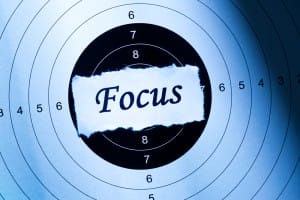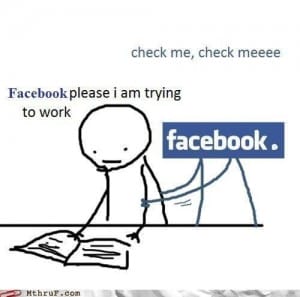Often you get to the end of the day and think, “I was busy all day, but what did I accomplish?”
Goals give us more than just a target to aim for — they help us change our behavior today. Do you get the work that is most important to you done? At the beginning of each day, there are three things you can do to ensure you’re going to gain momentum.
These are three few steps found most helpful to regain and maintain focus:
1. Determine what has your focus right now. First you’ll need to admit that something else has your attention. Ask yourself, “What is a typical workday like?” If possible, have someone audit your workflow over the course of a day or so. Ask them to tell you where it seems like you’re losing focus and momentum. Knowing what currently disturbs your focus is the first step.
How much quality time do you have for deep thinking, getting important tasks done, developing new ideas and building on old ones? Are you in a highly interruptive environment?
If you find yourself multitasking often, consider the following five-day-experiment. For just the next five days, schedule — and stick to — a few longer blocks of focused time to get important work done. Start with blocking just 30 to 45 minutes each day to focus on bigger projects and move them forward.
2. Cut “should” out of your vocabulary. You’re better off without constantly “should-ing” yourself. Getting caught up in things you “should” do is a negative mindset that only clouds your focus and pulls you away from thinking about what you’re accomplishing in the moment.
Of course we all have lists of things we “should” do. I initially reduced this list for myself simply by noticing where and when I engaged in that behavior. Stopping to reflect on one “should” at a time allowed me to attach an action step to it. That change alone lowered my anxiety.
If you’re struggling to make a decision about what you should and should not be doing, breakdown the steps you need to take and weigh the pros and cons of focusing on the specific task at hand.
These focus activities make it easier to decide whether to say “yes” or “no,” whatever the situation or question. Either way, you save time and get engaged faster in making your ideas happen, because you’re one step closer to moving your focus away from asking “Should I?” to “How can I?”
3. Remove distractions. Realize that your focus is splintered in the face of distractions — primarily visual and auditory.
What distractions around you decrease your productivity? Visual distractions include piles of papers or unfinished projects, and even sticky notes on your computer. Auditory distractions are generally sounds that pull your focus from your project. Turn off dings, alarms, notification alerts, popups and sounds that you can control.
Distractions and interruptions can fool us into thinking we’re being productive, while destroying your focus.
Don’t try to change everything at once. Select just one auditory or visual distraction and eliminate it. Give these small changes a week and see what happens. If your focus improves, continue distraction reduction.
Ultimately focus allows us to complete what’s important to us. With a strong goal, a clear objective, and 10 to 15 minutes of focused time, you can move much farther and faster than you thought possible.
As an Amazon Associate, TechCity may earn a small commission if you shop these products.
















